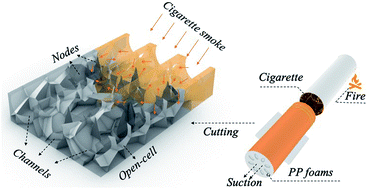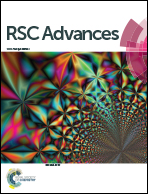Novel lightweight open-cell polypropylene foams for filtering hazardous materials
Abstract
Owing to the problems existing in traditional technologies for preparing commercial cellulose acetate (CA) cigarette filters, such as complex processing and chemical solution usage, novel lightweight polypropylene (PP) foams with similar geometries but different porous structures were designed and successfully prepared as filters for potentially hazardous materials via supercritical CO2 (scCO2) extrusion foaming technology without the use of any harmful chemical reagents and the problems of floating micro-nano fibers. Interestingly, the results showed that the PP foams with a flower-like/bamboo-like foamed structure not only possess modest draw resistance of 2625 Pa to maintain the smoking mouthfeel, but also show modest filtering performance, as some of the smoke constituents such as tar, nicotine, and benzo[a]pyrene (B[a]P) of the sample are similar to that of the commercial CA cigarette filters, suggesting its excellent potential as the next-generation cigarette filters. Moreover, the formation mechanism of different foam structures as well as the mechanism of the cigarette smoke transport in such PP foams is discussed.



 Please wait while we load your content...
Please wait while we load your content...